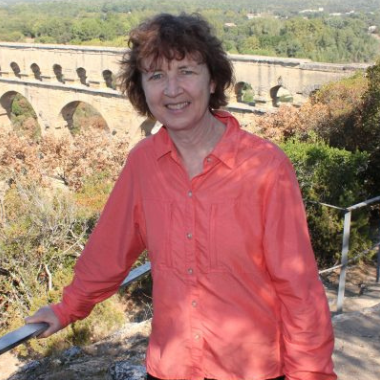TAMEST Member Profile: Bridget R. Scanlon, Ph.D. (NAE), The University of Texas at Austin

TAMEST Member Bridget R. Scanlon, Ph.D. (NAE) is often called a world-leading authority on water research. Dr. Scanlon, a Senior Research Scientist at The University of Texas at Austin, currently heads the Sustainable Water Resource Program for the UT Bureau of Economic Geology.
Born in Ireland, she has spent the last 34 years living and working in Texas studying the effects of climate change and land usage patterns on groundwater. In 2016, she was elected to the National Academy of Engineering (NAE) for her work evaluating aquifer depletion and groundwater recharge.
TAMEST connected with Dr. Scanlon to learn more about her commitment to water sustainability and how she utilizes satellite data, surface hydrologic data and groundwater data to examine different approaches to coping with extreme conditions.
Please tell us a little about yourself and your work.
I am currently a Senior Research Scientist at the Bureau of Economic Geology within the Jackson School of Geosciences at The University of Texas at Austin.
I have been at the UT Austin since 1987 and have conducted research on a variety of topics including characterization of nuclear waste disposal sites, impacts of irrigation on water resources, assessment of water quality issues, applications of satellites to global water resources, and water energy nexus issues.
How did you get interested in the field of water sustainability?
As I began to understand the widespread impact of irrigated agriculture on water resources, I wanted to evaluate different approaches to move toward more sustainable water management.
Our team applied a variety of tools to assess water sustainability, including water quantity and quality assessments and focusing on the soil zone that links land use practices with subsurface groundwater resources.
Much of our work focused on the United States (U.S.) High Plains, including comparisons with other regions, including U.S. Central Valley, Australian Murray Darling Basin, West Africa and Northwest India.
You help to run the Sustainable Water Resources Program at UT Austin. What does the program do?
The Center for Sustainable Water Resources conducts studies related to water quantity and quality aspects of water resources. Within this program we evaluate sustainability issues at a variety of scales from local field studies using monitoring and modeling to global studies using satellite data and global models.
Examples of our work include highlighting the impacts of cropland expansion on increasing groundwater recharge in semiarid regions in the Southwest U.S., Murray Darling Basin in Australia, and aquifers in Niger and Senegal in West Africa.
We use soil cores to assess impacts of land use change on subsurface water resources, similar to use of ice cores to assess climate change. While much of the soil profiling has focused on the High Plains aquifer system, our researchers have also used soil profiling in the Loess Plateau in China and in Rajasthan desert region in NW India among many other regions.
Talk about some of the SWRP’s more recent research.
More recently we have been assessing linkages between climate extremes (floods and droughts) and water resources throughout Africa using GRACE satellite data, showing the importance of climate teleconnections, such as El Nino Southern Oscillation and Indian Ocean Dipole, on wet and dry climate cycles.
Water quality issues are also critical, particularly for small community water systems in rural areas throughout the U.S. However, the new infrastructure funding (~$50 billion) provides an opportunity to address some of these issues over the next five years.
We have been conducting reconnaissance studies to optimize deployment of these funds for disadvantaged communities. Our preliminary results show the importance of naturally occurring contaminants linked to geology throughout the Southwest U.S. and disinfection byproducts related to water treatment issues in Southcentral U.S.
What makes you most passionate about your work?
I am extremely curious about understanding how systems function and how we can adapt water management to address droughts and floods and many other challenges.
The wealth of data available from NASA, U.S. Geological Survey, state agencies and many other groups helps us develop a deeper understanding of water systems and allows us to generate insights that can be used by decision makers to manage these resources.
What first brought you to Texas?
I applied for a position at UT Austin related to characterizing sites for high level nuclear waste disposal. I was very impressed with the research being conducted at the University and with the opportunities available at the Bureau of Economic Geology.
Why do you continue to live and work here?
I very much enjoy working at the Bureau of Economic Geology at UT Austin. The collaborative spirit created by this soft money organization provides an excellent environment to conduct timely research to address societal issues.
The Jackson endowment and the Jackson School greatly expanded the research opportunities in the early 2000s. Austin has also provided an excellent environment to raise kids.
What does being a member of TAMEST mean to you?
Being a TAMEST member provides an opportunity to work with colleagues within TAMEST to address critical issues for the state of Texas, such as drinking water quality issues, drought and flood hazards, and other related topics.

